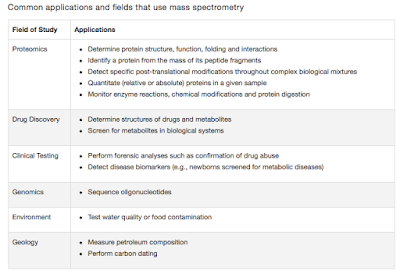HIV restriction factor- Mx2
Greetings
A study published in Nature by Goujon etal, has showed that this factor is probably important in HIV infection, as a restriction factor. This is based on the observation that, cell lines where Mx2 was switched off, showed better replication in comparison to the cells where Mx2 is on. However, the surprise is that Mx1 (Discussed above), cannot curb the HIV. Mx2 is effective against HIV not Influenza and Mx1 is vice versa.
This has important implications. As the authors suggest- there can be 2 therapeutic approaches designed based on this concept. First, we can make an analogue of Mx2 that can serve the same function or develop a compound that can increase the activity of Mx2 protein.
 Gao S, von der Malsburg A, Dick A, Faelber K, Schröder GF, Haller O, Kochs G, & Daumke O (2011). Structure of myxovirus resistance protein a reveals intra- and intermolecular domain interactions required for the antiviral function. Immunity, 35 (4), 514-25 PMID:21962493
Gao S, von der Malsburg A, Dick A, Faelber K, Schröder GF, Haller O, Kochs G, & Daumke O (2011). Structure of myxovirus resistance protein a reveals intra- and intermolecular domain interactions required for the antiviral function. Immunity, 35 (4), 514-25 PMID:21962493
More recently, I have been posting a lot on HIV. Someone commented, "Guess this blog has to be called as "Retro-virology" rather than Medical Microbiology. There has been so many papers on HIV that appeared recently, that has been so interesting to me at least, that I intended to follow up with. Probably am biased in my literature search, as these days am concentrating more on HIV papers!!! Either way, its interesting enough.
Viruses (irrespective of type) and the host cells have been in a constant competitive turn up against each other. Each trying to get the better of other. That's the "Red queen hypothesis". So, at least by virtue of evolution, we have selected for genetic factors and machinery that are dedicated to cellular immunity. So, it wouldn't come as a surprise, if I told you that the the cells have some discovered (and possibly many undiscovered), factors that act as HIV restriction factors.
Well studied HIV restriction factors include- Cyclophilin A, APOBEC3, TRIM-5α, SAMHD1 and BST-2. The details of these has been shown in Table 1.
 |
| Table 1: Major HIV restriction factors. |
MX2 (Myxovirus Resistance 2) protein coded by MX2 gene, is a type of Dyanamin like GTPase occuring in 2 forms- Nuclear form and cytoplasmic form. The nuclear form has a NLS (nuclear localisation signal, whereas cytoplasmic form doesn't (NLS is present at the amino terminal end of the nuclear form but not in cytoplasmic form due to use of an alternate translation start codon). The Mx proteins are implicated in the interferon type I signalling mediated innate antiviral response. Human MxA GTPase known to be localised with intracellular membranes, preferentially in Endoplasmic Reticulum- Golgi intermediate compartment, which is used by many viral pathogens as an intracellular replication site.
 |
| Fig 1: Proposed mechanism of Mx functioning. Source |
The crystal structure of MXa protein studied by Gao etal, suggested Mx proteins contains 3 domains-
1. Amino-terminal (N-terminal) GTPase (G) domain
2. Central middle domain (MD)
3. Carboxy-terminal (C-terminal) GTPase effector domain (GED)
It is proposed that the antiviral activity of MxA would be dependent
on GTP hydrolysis performed by the G domain and oligomerization mediated by the MD and GED. Current understanding speculates that the Mx possibly interacts with viral ribonucleoprotein, and thus inhibiting the replication. See Fig 1. The structure and function of other Mx proteins is not expected to differ much.
A study published in Nature by Goujon etal, has showed that this factor is probably important in HIV infection, as a restriction factor. This is based on the observation that, cell lines where Mx2 was switched off, showed better replication in comparison to the cells where Mx2 is on. However, the surprise is that Mx1 (Discussed above), cannot curb the HIV. Mx2 is effective against HIV not Influenza and Mx1 is vice versa.
This has important implications. As the authors suggest- there can be 2 therapeutic approaches designed based on this concept. First, we can make an analogue of Mx2 that can serve the same function or develop a compound that can increase the activity of Mx2 protein.
Goujon C, Moncorgé O, Bauby H, Doyle T, Ward CC, Schaller T, Hué S, Barclay WS, Schulz R, & Malim MH (2013). Human MX2 is an interferon-induced post-entry inhibitor of HIV-1 infection. Nature PMID:24048477





Comments
Post a Comment